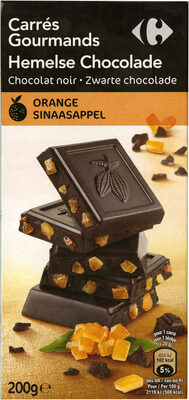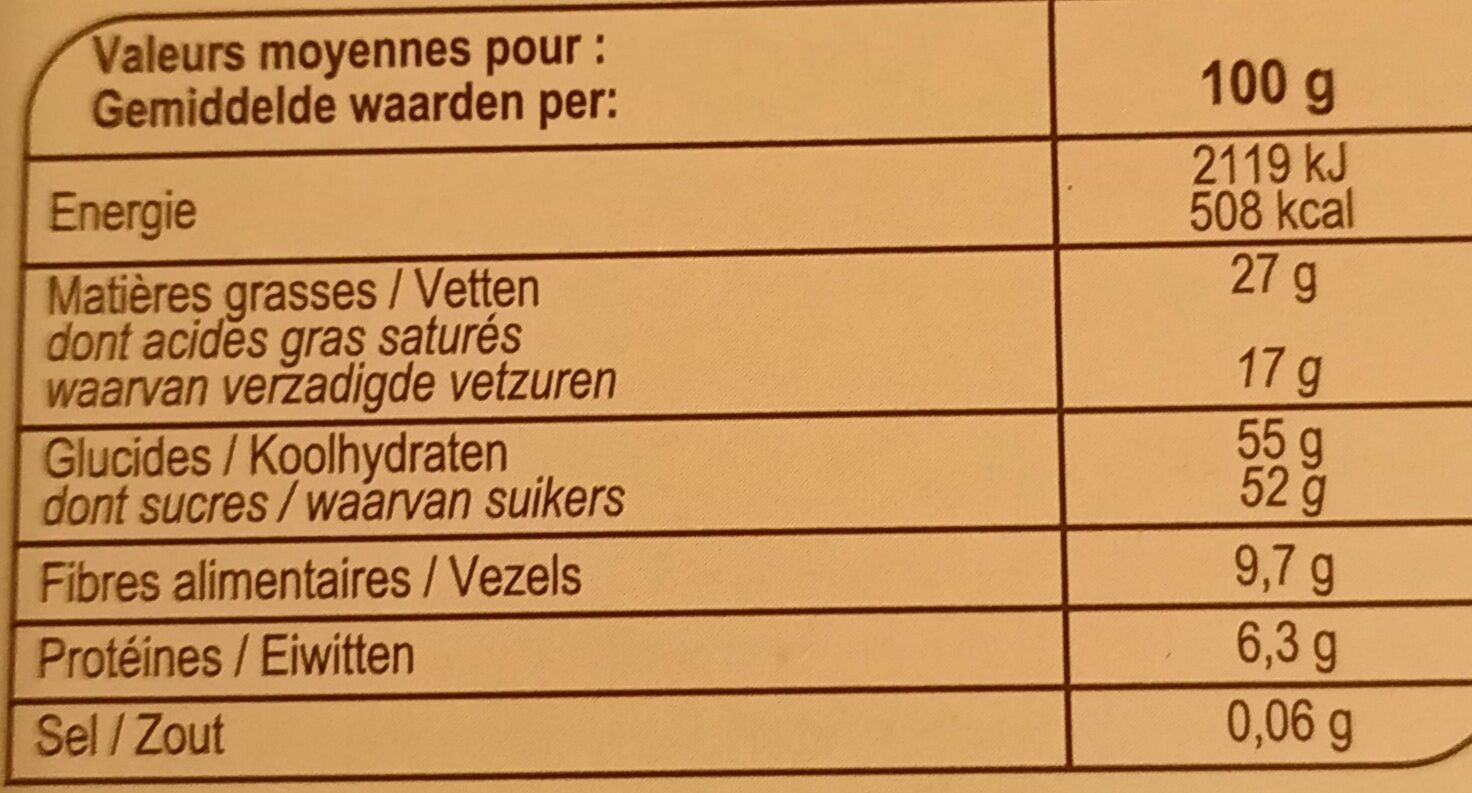Noir orange confite - Carrefour - 200 g
Aquesta pàgina del producte no està completa. Podeu ajudar a completar-la editant-la i afegint-hi més dades a partir de les fotos ja disponibles, o fent-ne més amb l'aplicació de androide o iPhone / iPad. Gràcies!
×
Algunes de les dades d’aquest producte les ha proporcionat directament el fabricant Carrefour.
Codi de barres: 3270190136668 (EAN / EAN-13)
Nom comú: Chocolat noir aux écorces d'orange confites.
Quantitat: 200 g
Empaquetament:
Cartó, en:Green dot, en:Triman, fr:Carton et film à recycler en France, fr:Carton à recycler en Belgique, fr:Film à jeter en Belgique

Marques: Carrefour
Categories: Snacks, Aperitius dolços, Cacau i derivats, Xocolata, Xocolata negra, en:Dark chocolates with orange
Etiquetes, certificacions, premis:
Punt verd, Fet a França, Comptador Nutricional
Llocs de fabricació o processament: France
Codi de traçabilitat: EMB 66136 - Perpignan (Pyrénées-Orientales, France)
Botigues: Carrefour Market, Carrefour
Matching with your preferences
Altres dades
Condicions de conservació: Conservation : à conserver à l'abri de l'humidité, de la chaleur (entre 18°C et 20°C) et d'odeurs parasites. À consommer de préférence avant fin / N° de lot : voir ci-dessous.
Report a problem
Fonts de dades
Producte afegit per andre
Última modificació de la pàgina del producte per roboto-app.
La pàgina del producte, també editada per dorado, ecoscore-impact-estimator, foodless, foodviewer, geodata, kiliweb, manu1400, moon-rabbit, openfoodfacts-contributors, org-carrefour, quechoisir, spotter, teolemon, yuka.ZTYxY09xOFJ2T1JidWZFQXB6N3c4SUoxNmE3NVoyV1lGUE1zSVE9PQ.












